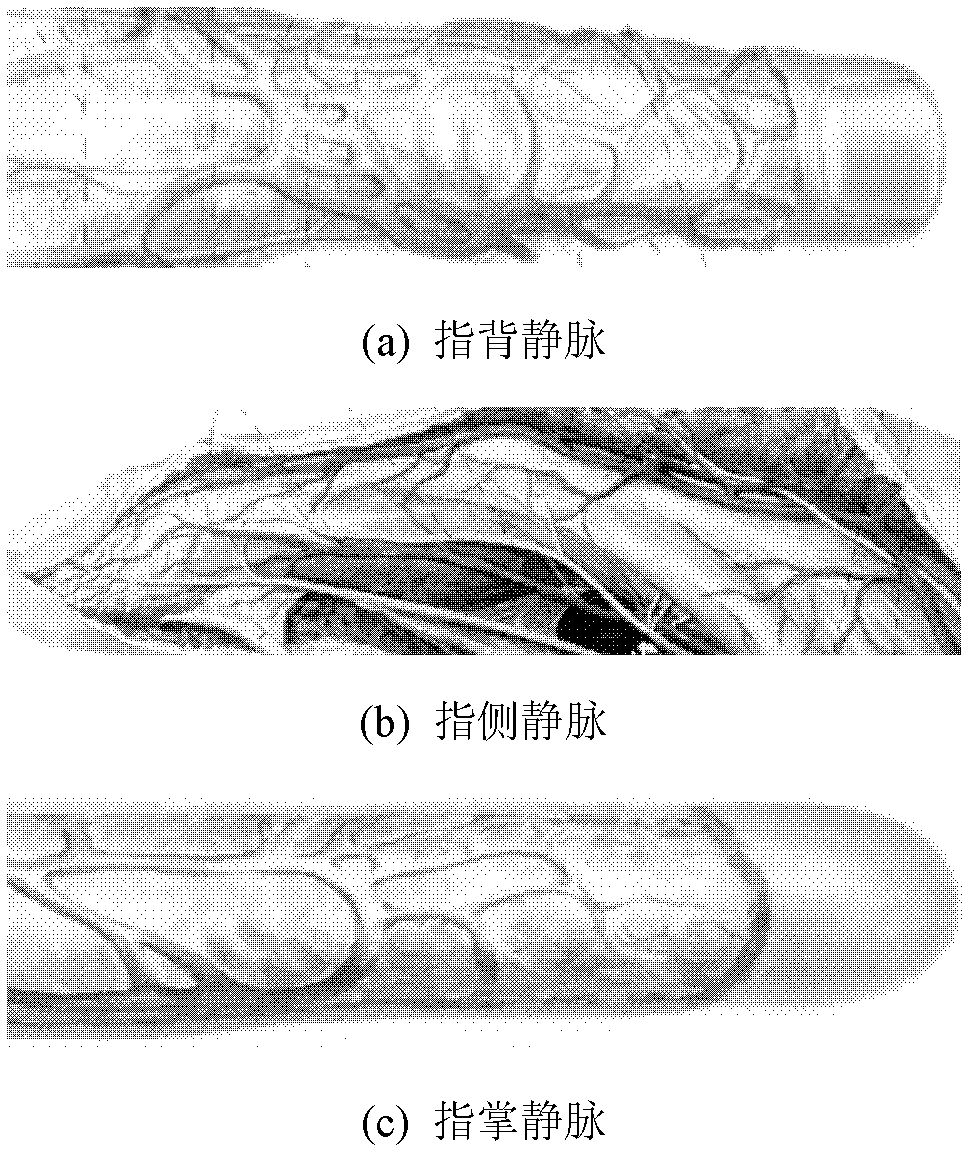Vine model creating method for finger vein tridimensional characteristic identification
A technology of finger veins and three-dimensional features, applied in character and pattern recognition, instruments, computer components, etc., can solve problems such as vein breakage, burr interference, and difference in vein clarity
- Summary
- Abstract
- Description
- Claims
- Application Information
AI Technical Summary
Problems solved by technology
Method used
Image
Examples
Embodiment Construction
[0072] The invention is a vine model modeling method for three-dimensional feature recognition of finger veins. Firstly, the four principles of uniform pipe diameter, cane classification, node division, and spreading constraints are used to simplify and abstract the spatial structure of finger veins; then the vines are given. The elements, attributes and mathematical description of the model; finally, the data structure of the vine model is used to draw the stereoscopic image of the vein. The specific process is as follows:
[0073] 1. Method for simplifying the spatial structure of finger veins
[0074] 1.1 The principle of uniform pipe diameter
[0075] Differences in caliber are small when major veins are imaged, assuming that the calibers of the major finger veins are the same.
[0076] 1.2 Cane Grading Principles
[0077] The cane grading principle is: from the root of the finger to the tip of the finger, from the palm of the finger to the back of the finger, and count...
PUM
 Login to View More
Login to View More Abstract
Description
Claims
Application Information
 Login to View More
Login to View More - R&D
- Intellectual Property
- Life Sciences
- Materials
- Tech Scout
- Unparalleled Data Quality
- Higher Quality Content
- 60% Fewer Hallucinations
Browse by: Latest US Patents, China's latest patents, Technical Efficacy Thesaurus, Application Domain, Technology Topic, Popular Technical Reports.
© 2025 PatSnap. All rights reserved.Legal|Privacy policy|Modern Slavery Act Transparency Statement|Sitemap|About US| Contact US: help@patsnap.com



